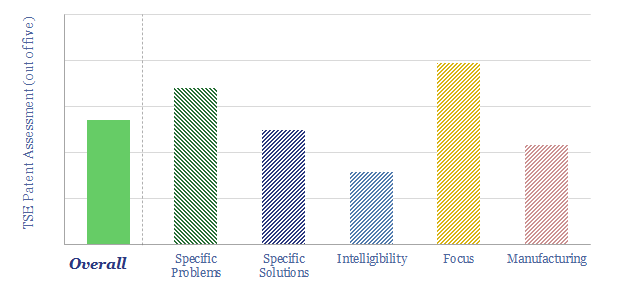
…building on a packaging material (PET) partnership that goes back to 2016. $399.00 – Purchase Checkout Added to cart Its ambition is to use wood residues to create carbon-negative plastics, cost-competitively with…
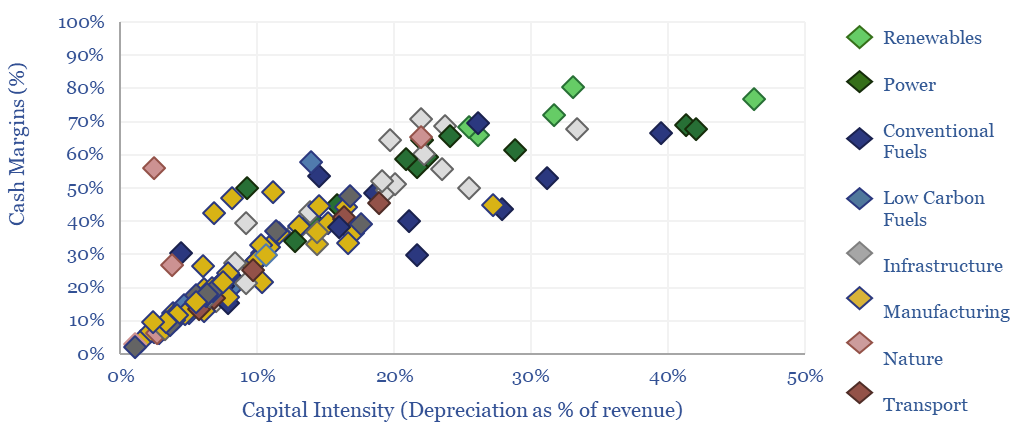
…Ammonia, Carbon Fiber, Cement, Copper, Cyanides, Desalination, Glass, H2O2, Hydrogen, Industrial Gases, Lithium Batteries, Methanol, NaOH/Cl2, Nitric Acid, Paper, Plastics, Silicon, Silver, Steel, Wood Products. As a rule of thumb,…
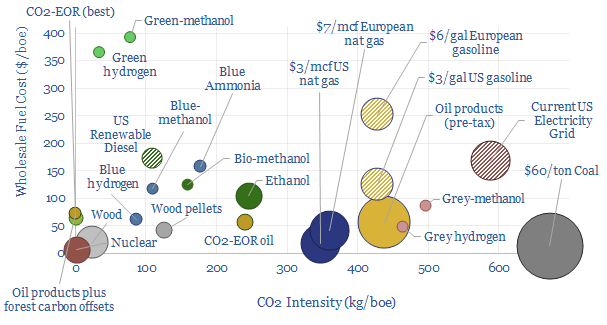
…coal, wood, nuclear, biofuels, methanol, hydrogen, CO2-EOR products and the US electricity grid for comparison. Good rules of thumb are that $60/ton coal equates to thermal energy at 1c/kWh-th, while…
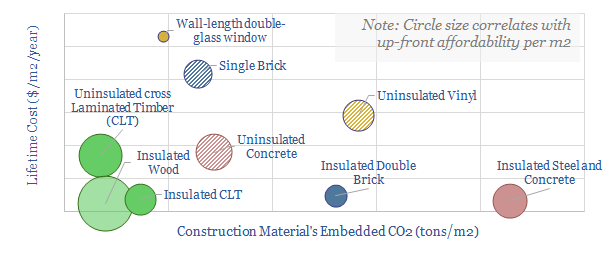
The construction industry accounts for 10% of global CO2, mainly due to cement and steel. But mass timber could become a dominant new material for the 21st century, lowering emissions…
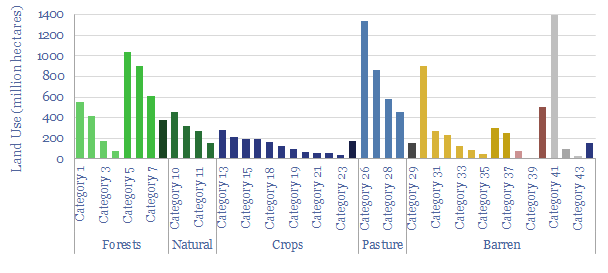
…actively managed forecasts can absorb more carbon than mature forests (summary here, wood carbon credentials here). We still think Finland’s forestry industry makes for a very interesting case study here….
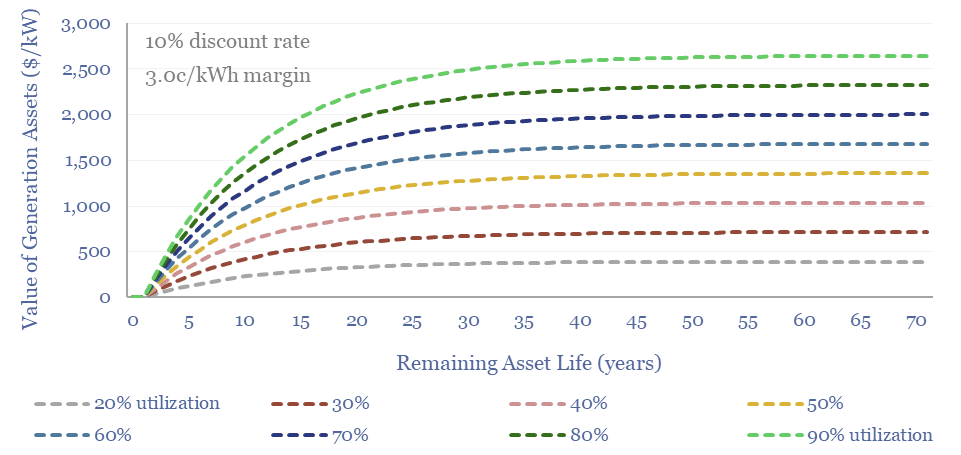
…by NPV calculations for onshore wind, offshore wind, solar, hydro, nuclear, gas CCGTs, gas peakers, coal, biomass and diesel gensets. A good general ballpark for the fair value of any…
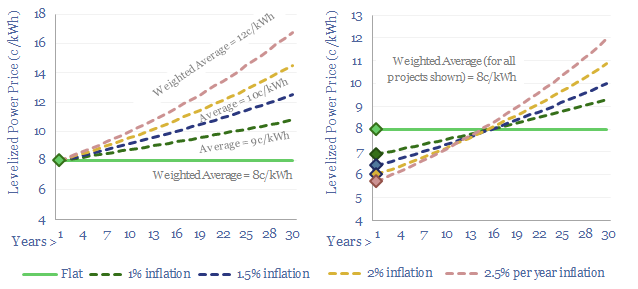
…we have constructed levelized costs models for onshore wind, offshore wind, solar, hydro, nuclear, gas, coal, biomass, diesel gensets and geothermal. All of these numbers are shown on a nominal…
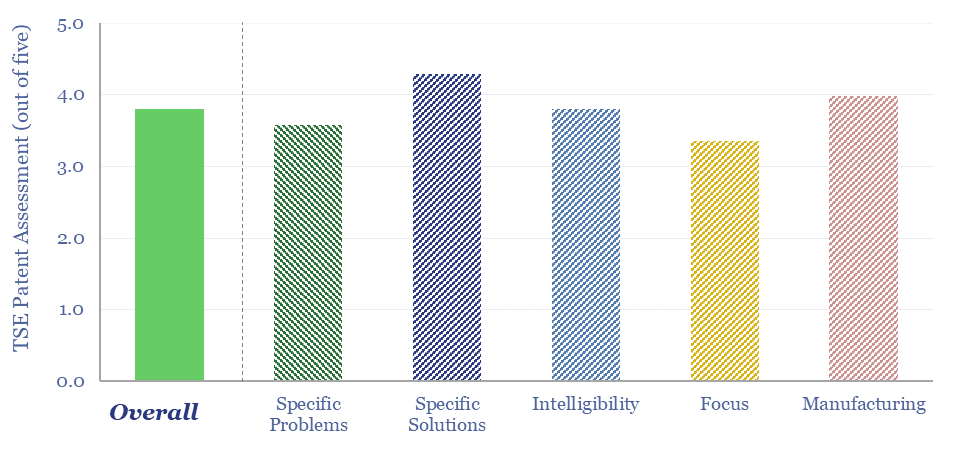
…Wilcox has been vociferously describing its BrightLoop technology, which is a Chemical Looping Combustion (CLC) technology generating clean hydrogen from hydrocarbon fuels (e.g., coal, biomass, waste or possibly gas). Babcock…
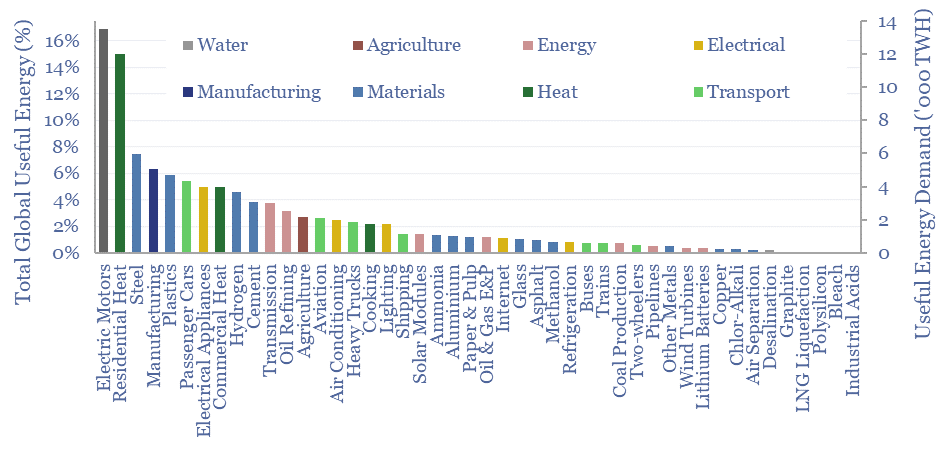
…oil, gas, coal, nuclear, hydro, wind and solar, biomass and other. A breakdown of global energy demand is more challenging. But we have slowly been building up a library of…
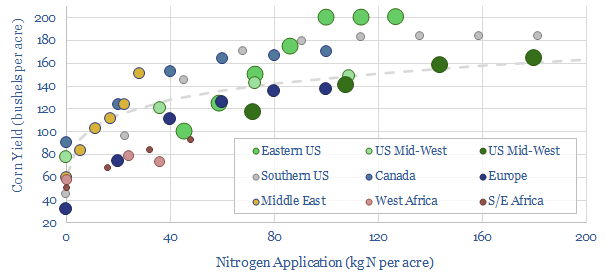
…for other crops. Corn is particularly demanding of nitrogen in its reproductive stages of growth. This ridiculously prolific crop will have 55% of its entire biomass invested in its ‘ears’…










